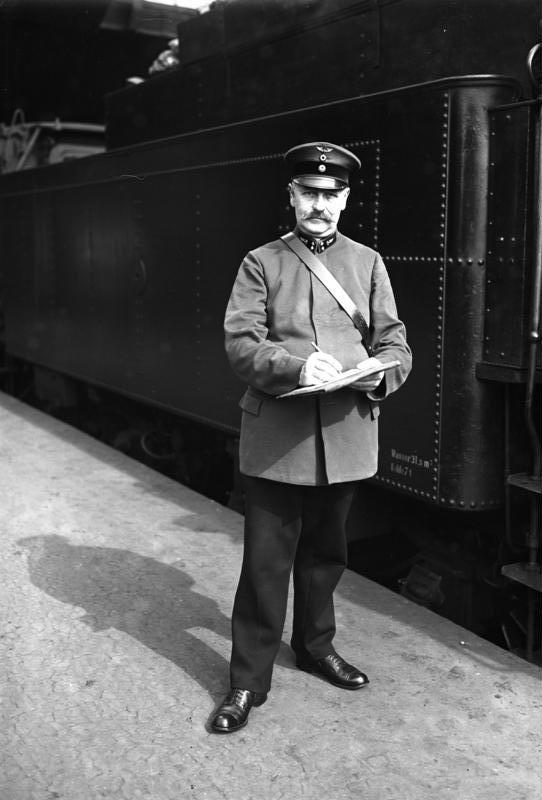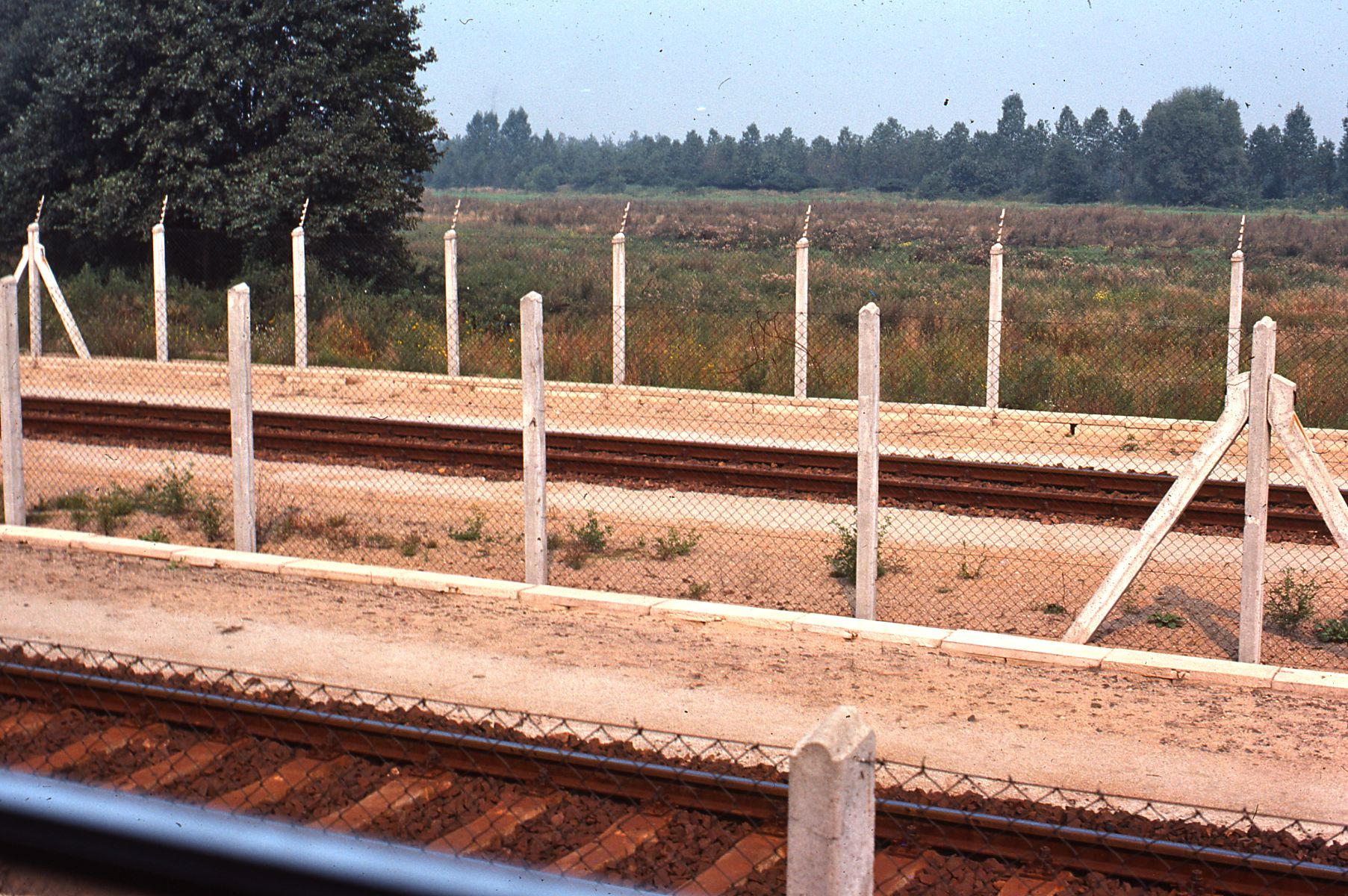|
Aglasterhausen Station
Aglasterhausen station is the terminus of the Meckesheim–Neckarelz railway in Aglasterhausen in the German state of Baden-Württemberg. It has one platform and is located in the network administered by the Verkehrsverbund Rhein-Neckar (VRN). It is classified by Deutsche Bahn as a category 7 station. It was opened with the Odenwald Railway (''Odenwaldbahn'') from Heidelberg to Würzburg as a through station on 23 October 1862. The section from Aglasterhausen to Obrigheim was closed on 25 September 1971, turning Aglasterhausen station into a terminus. It has been the terminus of line S51 of the Rhine-Neckar S-Bahn since June 2010. History The Grand Duchy of Baden State Railway, which operated railways in Baden from 1840 to 1920, when it was integrated into Deutsche Reichsbahn, commenced operations of the Baden Odenwald railway between Heidelberg, Meckenheim, Aglasterhausen and Mosbach on 23 October 1862. With the opening of the Neckar Valley Railway on the Neckargemünd–Ne ... [...More Info...] [...Related Items...] OR: [Wikipedia] [Google] [Baidu] |
Aglasterhausen
Aglasterhausen is a municipality in the district of Neckar-Odenwald-Kreis, in Baden-Württemberg, Germany. History Aglasterhausen is first mentioned in the records of the Bishop of Worms in 1143. It had its own nobility as early as the middle of the 12th century. In 1416, the town was ceded to the Electorate of the Palatinate, but with the death of Friedrich von Hirschhorn in 1632, that line ended, and the ownership reverted to the bishopric of Worms. This continued until 1803, when Aglasterhausen was given to Baden. Mayors * 1981–2013: Erich Dambach * 2013–2021: Sabine Schweiger * since 2021: Stefan Josef Kron Personalities * Albert Schreiner (1892-1979), Communist politician and historian * Helmut Degen (1911-1995), composer * Hans Kissel Hans Kissel (19 February 1897 – 30 November 1975) was a highly decorated Generalmajor in the Wehrmacht during World War II. He was also a recipient of the Knight's Cross of the Iron Cross. The Knight's Cross of the Iron Cr ... [...More Info...] [...Related Items...] OR: [Wikipedia] [Google] [Baidu] |
Deutsche Reichsbahn
The ''Deutsche Reichsbahn'', also known as the German National Railway, the German State Railway, German Reich Railway, and the German Imperial Railway, was the German national railway system created after the end of World War I from the regional railways of the individual states of the German Empire. The ''Deutsche Reichsbahn'' has been described as "the largest enterprise in the capitalist world in the years between 1920 and 1932"; nevertheless its importance "arises primarily from the fact that the Reichsbahn was at the center of events in a period of great turmoil in German history". Overview The company was founded on 1 April 1920 as the ("German Imperial Railways") when the Weimar Republic, which still used the nation-state term of the previous monarchy, (German Reich, hence the usage of the in the name of the railway; the monarchical term was ), took national control of the German railways, which had previously been run by the German states. In 1924 it was reorgan ... [...More Info...] [...Related Items...] OR: [Wikipedia] [Google] [Baidu] |
Buildings And Structures In Neckar-Odenwald-Kreis
A building, or edifice, is an enclosed structure with a roof and walls standing more or less permanently in one place, such as a house or factory (although there's also portable buildings). Buildings come in a variety of sizes, shapes, and functions, and have been adapted throughout history for a wide number of factors, from building materials available, to weather conditions, land prices, ground conditions, specific uses, prestige, and aesthetic reasons. To better understand the term ''building'' compare the list of nonbuilding structures. Buildings serve several societal needs – primarily as shelter from weather, security, living space, privacy, to store belongings, and to comfortably live and work. A building as a shelter represents a physical division of the human habitat (a place of comfort and safety) and the ''outside'' (a place that at times may be harsh and harmful). Ever since the first cave paintings, buildings have also become objects or canvasses of much artisti ... [...More Info...] [...Related Items...] OR: [Wikipedia] [Google] [Baidu] |
1862 Establishments In Baden
Year 186 ( CLXXXVI) was a common year starting on Saturday (link will display the full calendar) of the Julian calendar. At the time, it was known as the Year of the Consulship of Aurelius and Glabrio (or, less frequently, year 939 ''Ab urbe condita''). The denomination 186 for this year has been used since the early medieval period, when the Anno Domini calendar era became the prevalent method in Europe for naming years. Events By place Roman Empire * Peasants in Gaul stage an anti-tax uprising under Maternus. * Roman governor Pertinax escapes an assassination attempt, by British usurpers. New Zealand * The Hatepe volcanic eruption extends Lake Taupō and makes skies red across the world. However, recent radiocarbon dating by R. Sparks has put the date at 233 AD ± 13 (95% confidence). Births * Ma Liang, Chinese official of the Shu Han state (d. 222) Deaths * April 21 – Apollonius the Apologist, Christian martyr * Bian Zhang, Chinese official and gener ... [...More Info...] [...Related Items...] OR: [Wikipedia] [Google] [Baidu] |
Railway Stations In Germany Opened In 1862
Rail transport (also known as train transport) is a means of transport that transfers passengers and goods on wheeled vehicles running on rails, which are incorporated in tracks. In contrast to road transport, where the vehicles run on a prepared flat surface, rail vehicles (rolling stock) are directionally guided by the tracks on which they run. Tracks usually consist of steel rails, installed on sleepers (ties) set in ballast, on which the rolling stock, usually fitted with metal wheels, moves. Other variations are also possible, such as "slab track", in which the rails are fastened to a concrete foundation resting on a prepared subsurface. Rolling stock in a rail transport system generally encounters lower frictional resistance than rubber-tyred road vehicles, so passenger and freight cars (carriages and wagons) can be coupled into longer trains. The operation is carried out by a railway company, providing transport between train stations or freight customer facilit ... [...More Info...] [...Related Items...] OR: [Wikipedia] [Google] [Baidu] |
Electric Multiple Unit
An electric multiple unit or EMU is a multiple-unit train consisting of self-propelled carriages using electricity as the motive power. An EMU requires no separate locomotive, as electric traction motors are incorporated within one or a number of the carriages. An EMU is usually formed of two or more semi-permanently coupled carriages, but electrically powered single-unit railcars are also generally classed as EMUs. The great majority of EMUs are passenger trains, but versions also exist for carrying mail. EMUs are popular on commuter and suburban rail networks around the world due to their fast acceleration and pollution-free operation. Being quieter than diesel multiple units (DMUs) and locomotive-hauled trains, EMUs can operate later at night and more frequently without disturbing nearby residents. In addition, tunnel design for EMU trains is simpler as no provision is needed for exhausting fumes, although retrofitting existing limited-clearance tunnels to accommodate th ... [...More Info...] [...Related Items...] OR: [Wikipedia] [Google] [Baidu] |
DBAG Class 425
The Class 425 and Class 426 EMUs are a class of electric multiple units built by a consortium of Siemens, Bombardier and DWA, and are operated by DB Regio in Germany. They are essentially the same vehicle design, but the Class 425 EMU consists of four carriages, whereas the Class 426 EMUs only have two carriages.It's produced in H0 scale to a few train model railway. Description It is a high-powered, light-weight vehicle with high acceleration for short- and medium-distance services with frequent stops. The aluminium superstructure was built as flat as possible, both to minimize drag and to ease automated cleaning. The acceleration is achieved by distributing traction motors among eight of the train's ten axles including two of the three jacobs bogies. It is based on the Class 423 design, but lacks a third set of doorways in the centre of each car. See also * Express Rail Link, a Malaysian railway line which uses trains derived from the ET 425 *NS Sprinter Lighttrain, a Dut ... [...More Info...] [...Related Items...] OR: [Wikipedia] [Google] [Baidu] |
Meckesheim Station
Meckesheim station is a small railway junction in Meckesheim, North Baden in the German state of Baden-Württemberg. It is located on the Neckargemünd–Bad Friedrichshall railway and is classified by Deutsche Bahn as a category 4 station. The Schwarzbach Valley Railway branches off the Elsenz Valley Railway to Aglasterhausen in Meckesheim. Until 1990, the Wiesloch–Meckesheim/Waldangelloch railway also branched off via Schatthausen to Wiesloch Stadt and Wiesloch-Walldorf. History Meckesheimer station was opened on 23 October 1862 by the Grand Duchy of Baden State Railway (''Großherzoglich Badische Staatseisenbahnen'') together with the section of line from Neckargemünd to Meckesheim as part of the Odenwald Railway from Heidelberg to Mosbach and Würzburg. The section from Meckesheim to Bad Rappenau followed for 25 June 1868. (reprinted: Dumjahn, Mainz 1984, ) The Meckesheim–Neckarelz railway was also opened as an extension of the Neckargemünd–Meckesheim line in ... [...More Info...] [...Related Items...] OR: [Wikipedia] [Google] [Baidu] |
Buffer Stop
A buffer stop, bumper, bumping post, bumper block or stopblock (US), is a device to prevent railway vehicles from going past the end of a physical section of track. The design of the buffer stop is dependent, in part, on the kind of couplings that the railway uses, since the coupling gear is the first part of the vehicle that the buffer stop touches. The term "buffer stop" is of British origin, since railways in Great Britain principally use buffer-and-screw couplings between vehicles. Types Several different types of buffer stop have been developed. They differ depending on the type of coupler used and on the intended application. * Buffer stops with anticlimbers. These are particularly important for passenger railway applications, because the anticlimbers reduce the likelihood of telescoping of the railroad cars during a head-on impact. * Buffer stops for a knuckle coupler or an SA3 coupler (centrally positioned between the two rails) * Buffer stops with traditional ... [...More Info...] [...Related Items...] OR: [Wikipedia] [Google] [Baidu] |
Deutsche Bundesbahn
The Deutsche Bundesbahn or DB (German Federal Railway) was formed as the state railway of the newly established Federal Republic of Germany (FRG) on 7 September 1949 as a successor of the Deutsche Reichsbahn-Gesellschaft (DRG). The DB remained the state railway of West Germany until after German reunification, when it was merged with the former East German Deutsche Reichsbahn (DR) to form Deutsche Bahn, which came into existence on 1 January 1994. Background After World War II, each of the military governments of the Allied Occupation Zones in Germany were ''de facto'' in charge of the German railways in their respective territories. On 10 October 1946, the railways in the British and American occupation zones formed the ''Deutsche Reichsbahn im Vereinigten Wirtschaftsgebiet'' (German Imperial Railway in the united economic area), while on 25 June 1947, the provinces under French occupation formed the Südwestdeutsche Eisenbahn. With the formation of the FRG these succes ... [...More Info...] [...Related Items...] OR: [Wikipedia] [Google] [Baidu] |
Neckar Valley Railway
The Neckar Valley Railway, or Neckar Valley Main Line (german: Neckartalbahn) is a railway line from Heidelberg via Eberbach and Mosbach to Bad Friedrichshall-Jagstfeld in southwestern Germany. Today it is administered by the Verkehrsverbund Rhein-Neckar (Rhine-Neckar Transport Authority) and is partly worked by the Rhine-Neckar S-Bahn. History The Heidelberg–Neckargemünd section of the line was built in 1862 as part of the Baden Odenwald Railway (''Baden Odenwaldbahn''), running from the Heidelberg via Neckargemünd, Meckenheim, Neckarbischofsheim, Aglasterhausen, Obrigheim, Neckarelz, Mosbach, Oberschefflenz, Seckach, Osterburken, Königshofen and Lauda to Würzburg. Construction of the line was authorised by a law of 27 April 1860. The Heidelberg–Neckargemünd section was opened on 23 October 1862. Although the most obvious option for the route between Neckargemünd and Neckarelz would have been to build the line along the Neckar, this would have meant running thro ... [...More Info...] [...Related Items...] OR: [Wikipedia] [Google] [Baidu] |





